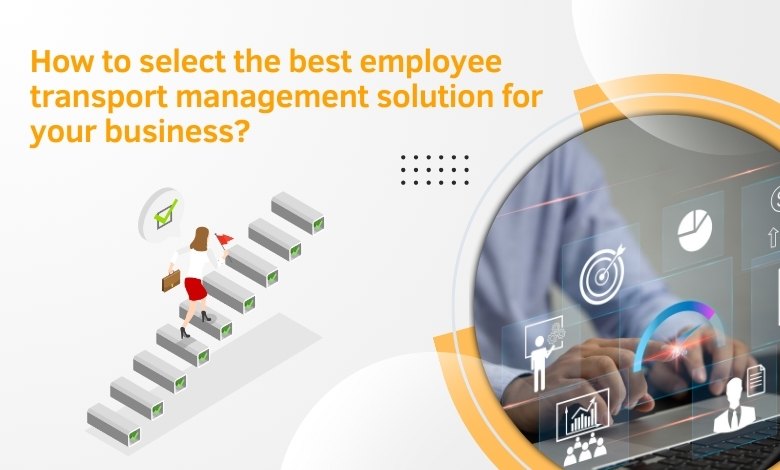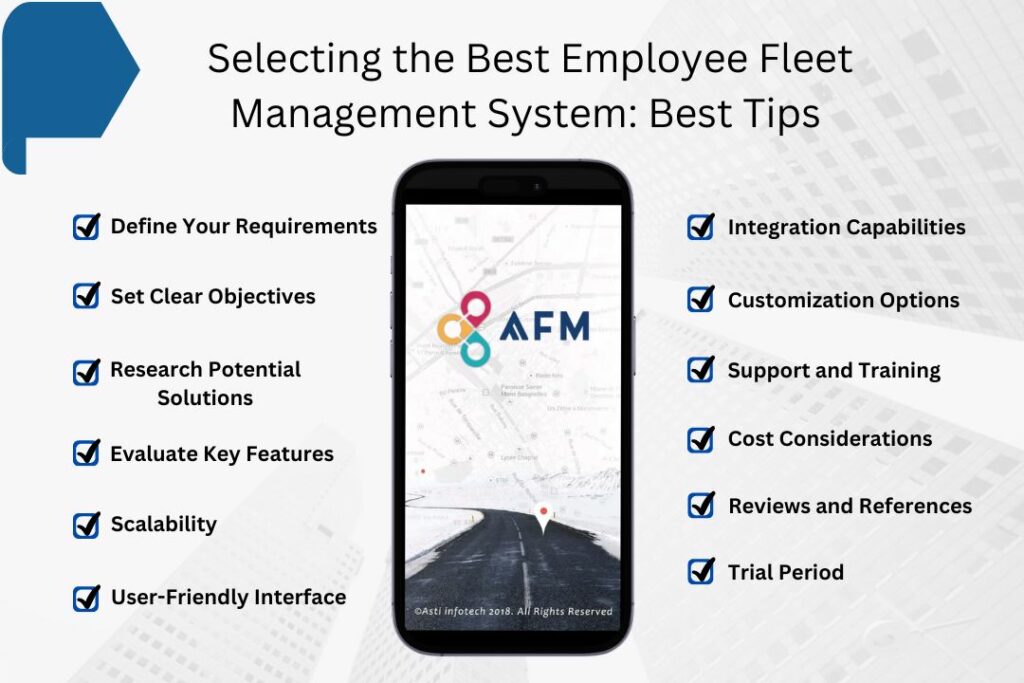How to select the best employee transport management solution for your business?

Increased fatigue, burnout, and stress are burning problems for your employees due to everyday commute hassles.
And the above factors can negatively impact employee engagement, ultimately affecting their work.
Besides, it puts a financial burden on your team, leading to employees not showing up or poor handling of their shifts.
The best way to address & tackle these problems is to deploy an employee transport management solution.
But the availability of so many options makes it confusing to pick the best one.
Don’t worry.
We will discuss the features you need to look for while selecting the best employee transport management solutions.
Without further delay, let’s get started.
What is An ETS or Employee Transport Management Solution?
An ETS is a comprehensive system or piece of software designed to manage and optimize a company’s fleet of vehicles that pick up and drop off employees on a daily basis.
An advanced employee fleet management system includes features like- live vehicle tracking, safety features, automatic roster & route planning, number masking for driver-employee communication, maintenance alerts, speed & route deviation alerts, and many more.
The idea is to ensure your employees commute to and from the office safely, without delays and complications.
The primary goal of an Employee Transport Management Solution is to ensure employee safety, improve fleet efficiency, reduce costs, and streamline the overall management of the company’s vehicle fleet.
Selecting the Best Employee Fleet Management System: Best Tips
Make sure you enquire about the following features while shortlisting the most suitable employee transport management system for your organization:

1. Define Your Requirements
Conduct a thorough analysis of your current employee transport system. Identify pain points, challenges, and areas where improvement is needed. Consider factors such as the number of employees, peak transport times, work shifts, and any specific requirements related to your industry.
2. Set Clear Objectives
Clearly outline the objectives you aim to achieve with the implementation of a fleet management solution.
Whether it’s reducing transport costs, optimizing routes for efficiency, improving employee satisfaction, or ensuring compliance with transportation regulations, having well-defined goals will guide your decision-making process.
3. Research Potential Solutions
Explore various solutions available in the market. Utilize online research, industry publications, and recommendations from peers to identify reputable vendors.
Consider the track record of vendors in terms of successful implementations and customer satisfaction.
4. Evaluate Key Features
Create a list of key features that align with your objectives. Assess the capabilities of each solution, paying attention to real-time tracking, route optimization, roster planning, safety features, fuel management, maintenance scheduling, and reporting functionalities. Prioritize features based on their importance to your business.
5. Scalability
Consider the future growth of your business and whether the solution can scale accordingly. Ensure that the software can handle an increase in the number of vehicles, employees, or changes in transportation needs without compromising performance.
6. User-Friendly Interface
Assess the usability of the software. A user-friendly interface is essential for both fleet managers and drivers. The solution must also offer an easy-to-use App for employees, through which they can plan their commute, make ad hoc requests, share ride details, and receive pick-up/drop-off notifications. An intuitive system reduces the learning curve, increases user adoption, and contributes to the overall success of the implementation.
7. Integration Capabilities
Check the integration capabilities of the solution. A system that can seamlessly integrate with existing software, such as HR, payroll, or accounting systems, promotes a more cohesive and efficient workflow. This integration minimizes manual data entry and enhances data accuracy.
8. Customization Options
Look for a solution that offers customization options to adapt to your business’s unique needs. Customization ensures that the solution can address specific challenges and align with your operational processes. For example, a solution that automates vehicle allocation based on vendor business ratio works well for larger organizations with multiple transport vendors.
9. Support and Training
Assess the level of support and training provided by the solution vendor. Determine the availability of customer support channels, training programs, and resources. Adequate support and training are critical for a smooth implementation and ongoing use of the system.
10. Cost Considerations
Understand the pricing structure of the solution. Evaluate both upfront costs and ongoing subscription fees. Consider the overall return on investment (ROI) and whether the solution aligns with your budget constraints. Be aware of any additional costs for upgrades or additional features.
11. Reviews and References
Read reviews from other businesses that have implemented the solution. Look for testimonials and case studies provided by the vendor. Additionally, request references from the vendor to connect with existing clients who can share their experiences and insights.
12. Trial Period
If possible, opt for a trial period or a pilot implementation before committing to a long-term contract. This allows you to test the solution in a real-world scenario, assess its performance, and gather feedback from users before making a final decision.
The Takeaway!
The right employee transport management solution can change the entire game of employee commute. It not only makes the commute safe & hassle-free for your team but also helps you save time and cost by reducing the need for manual scheduling, chances of risk, delayed reporting, compliance fines, etc.
If you want a detailed report on how the AFM tool can be tailored to your employee transport management needs, book a call with us today
FAQ’S
What key features should I prioritize when selecting an employee transport management solution?
Prioritize features such as live vehicle tracking for real-time monitoring, safety features like emergency alerts and driver behavior analysis, automated roster and route planning for efficiency, maintenance alerts for vehicle upkeep, and communication tools like number masking for seamless driver-employee interaction.
How can an employee transport management solution alleviate the burden of commuting-related stress on my employees?
By providing reliable and efficient transportation services, an employee transport management solution minimizes commuting hassles, reducing fatigue, burnout, and stress among employees. With optimized routes and timely pickups/drop-offs, employees can focus more on work rather than worrying about transportation issues.
What are the potential cost-saving benefits of implementing an employee transport management solution?
By streamlining fleet operations, optimizing routes, and reducing fuel consumption through efficient planning, an employee transport management solution can significantly lower transportation costs. Additionally, improved employee attendance and punctuality can lead to increased productivity, further contributing to cost savings.
How does real-time vehicle tracking contribute to employee safety and overall fleet management?
Real-time vehicle tracking allows for instant monitoring of vehicle whereabouts, ensuring employee safety during transit. It also enables quick response to emergencies or deviations from planned routes, enhancing security measures. From a management perspective, tracking facilitates better fleet coordination and performance evaluation.
Can an employee transport management solution be customized to suit the specific needs and size of my organization?
Yes, many employee transport management solutions offer customization options to cater to the unique requirements of different organizations. Whether you have a small fleet serving a single location or a large-scale operation with multiple routes and shifts, a tailored solution can be designed to meet your exact specifications and scale accordingly.
Quick Read: The Essential Guide To Employee Transport Management Solutions